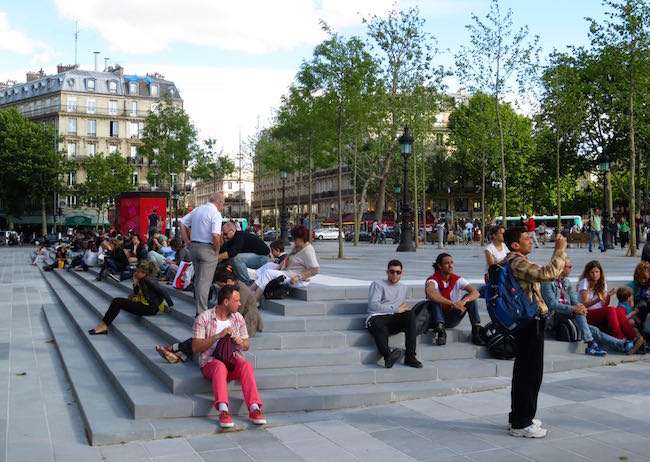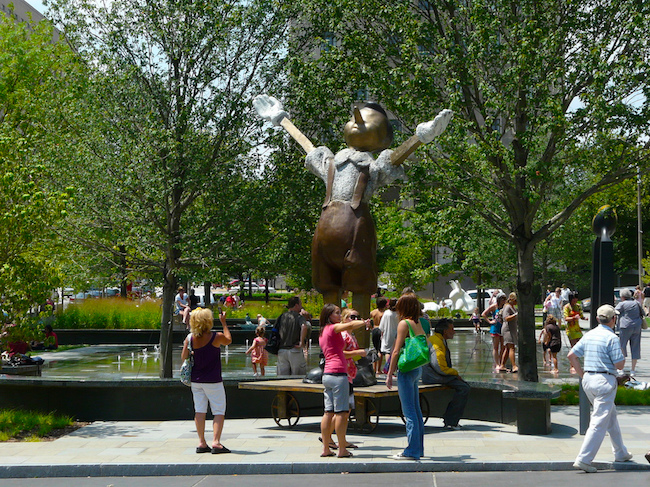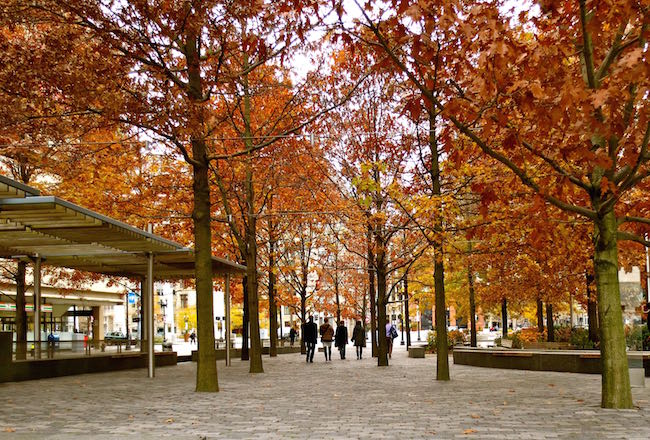A lot of people think exclusively of plants when they hear the term landscape. Without a common language to effectively describe it, the role landscape plays in the urban realm will remain undervalued.

I recently flipped through my copy of Anne Whiston Spirn’s classic 1984 book,The Granite Garden, and was reminded just how much it has helped to shape contemporary discussions about urban landscapes. Its focus on the need to incorporate nature and ecology into the fabric of even the densest cities was a significant precursor to the topics of green infrastructure and landscape urbanism that certain groups like to talk about so much. While the book’s paradoxical title captures the heart of Spirn’s book, it also brilliantly sums up the challenges that come with defining what landscape really means when it comes to our cities.

To the consternation of many landscape architects, lots of people think exclusively of plants when they hear the term landscape. While this isn’t the worst thing in the world, it does confuse the issue about what role landscape plays in the public realm. Some things are obvious, like parks, gardens and streetscapes, but there is a lot more involved, including multimodal transportation systems, stormwater infrastructure, open space development, natural resource management, etc. Relatively few people, however, seem to get this.

The main reason most people don’t understand landscape—especially within an urban context—is because there is no readily available or accepted vocabulary for them to tap into. Therefore, the “I have a yard and a lawn, so I get landscape,” mentality persists, to the point that people may be able to talk about gardens and, perhaps, parks, but that’s about it. This does seem to be changing in the biggest cities, however, thanks to a growing appreciation for high profile projects like the High Line and Millennium Park; but we still have a long way to go. We need a common language that exists beyond just landscape architects and the growing, but still small, populace obsessed with all things urban—a vocabulary that defines for the general public what landscape means and why it is important.
So here is my primer for urban landscape terminology. Some people will find it elementary, others woefully inadequate. But that's why I call it a primer...and it's only page one. I’m not trying to break any new ground here; I just want to help facilitate a conversation that I passionately believe is worth having.

From my perspective, the urban landscape can be fit into four basic typologies: Park, civic, garden and infrastructure.
Park is pretty self-explanatory. Like all of the typologies, a park is identified primarily by its function rather than appearance. Both passive and active recreation are typically important.
Civic refers to landscapes designed as extensions of the community in which they are located—integral parts of the public realm that accommodate the gathering of people to celebrate, protest or just be together. The National Mall in DC is probably the most obvious example of this; quaint, Italian piazzas are the most romanticized and coveted. All cities of a certain size likely have some civic spaces, whether they be a central square, plaza, mall or even an open space associated with a downtown library or post office.

Garden includes the obvious landscapes—official botanic gardens and arboreta, corporate, church, sculpture and residential scale gardens—as well as some cultural landscapes such as cemeteries, campuses and museum grounds. In a way, garden is a catchall for any horticulturally focused landscape that does not fall easily into another category.

Infrastructure, for the sake of this discussion, refers to landscapes that contribute to the operations and/or functioning of the city. This could mean all variations of transit corridors and green infrastructure systems, as all as the urban forest and other natural systems that offer ecosystem services.
These landscape types are almost never mutually exclusive, however. The value of open space in cities is at a premium, and the most successful urban places are often those that serve multiple functions. Citygarden in St. Louis is a great example of this. While it has a lot of the aesthetic and horticultural characteristics that make calling it a garden appropriate, it also provides many civic, recreational and stormwater benefits.

There is more to deciphering landscape than just identifying typologies. Each space or system is defined by criteria that add to the knowledge about what makes certain landscapes work. Examples—and there are many others—include:
Program: How landscapes are used is, perhaps, the most important criteria for understanding urban spaces. A place could be designed to accommodate five activities or fifty. Parks typically offer the most variety in program, while gardens often focus on more contemplative and passive uses.
Scale: The size of an urban landscape matters only in relation in to the relative size of the city in which it is located, and the density of its population. A small park that serves a relatively condensed neighborhood has no less intrinsic value than a massive park serving an entire city.
Horticulture: A certain level of horticultural intensity is often what will define a garden versus another type of landscape. Millennium Park, for instance, has a fairly limited plant palette overall, but the Lurie Garden, displaying Piet Oudolf’s masterful use of extensive plantings, could be called a true urban garden. Horticulture is also integral to many green infrastructure projects, and allows for the introduction of naturalistic landscape expressions in urban areas.

Accessibility: The Americans with Disabilities Act is obviously a guiding force of all public landscapes, but it is also important to understand accessibility in relation to the level of public access that is allowed. Civic spaces are, by definition, the most open, as they are meant to belong to the community and not be privileged places. Gardens, on the other hand, often involve expensive collections of plant material and access may be limited.
Materiality: All of the above tie directly into materiality, which gets a little more focused into design. Many civic spaces are built with extensive amounts of paved surface to respond to the potential for the gathering of many people. A notable exception is the National Mall, which is currently undergoing an extensive lawn restoration to repair many decades of constant use. Maintenance and management get tied into this, as well.

To me, this need for a shared language is not about labeling landscapes, nor is it about dividing them into categories for the sake of making them seem more precious. It is about recognizing that landscape is increasingly an imperative of contemporary life. As people continue to move back to cities that are already being affected by climate change, the urban landscape will be relied on as a tool for improving the quality of life, and creating healthy communities and ecosystems. We are not going to get it all right if we're not on the same page when talking about the subject.

Planetizen Federal Action Tracker
A weekly monitor of how Trump’s orders and actions are impacting planners and planning in America.

Map: Where Senate Republicans Want to Sell Your Public Lands
For public land advocates, the Senate Republicans’ proposal to sell millions of acres of public land in the West is “the biggest fight of their careers.”

Restaurant Patios Were a Pandemic Win — Why Were They so Hard to Keep?
Social distancing requirements and changes in travel patterns prompted cities to pilot new uses for street and sidewalk space. Then it got complicated.

Platform Pilsner: Vancouver Transit Agency Releases... a Beer?
TransLink will receive a portion of every sale of the four-pack.

Toronto Weighs Cheaper Transit, Parking Hikes for Major Events
Special event rates would take effect during large festivals, sports games and concerts to ‘discourage driving, manage congestion and free up space for transit.”

Berlin to Consider Car-Free Zone Larger Than Manhattan
The area bound by the 22-mile Ringbahn would still allow 12 uses of a private automobile per year per person, and several other exemptions.
Urban Design for Planners 1: Software Tools
This six-course series explores essential urban design concepts using open source software and equips planners with the tools they need to participate fully in the urban design process.
Planning for Universal Design
Learn the tools for implementing Universal Design in planning regulations.
Heyer Gruel & Associates PA
JM Goldson LLC
Custer County Colorado
City of Camden Redevelopment Agency
City of Astoria
Transportation Research & Education Center (TREC) at Portland State University
Camden Redevelopment Agency
City of Claremont
Municipality of Princeton (NJ)





























